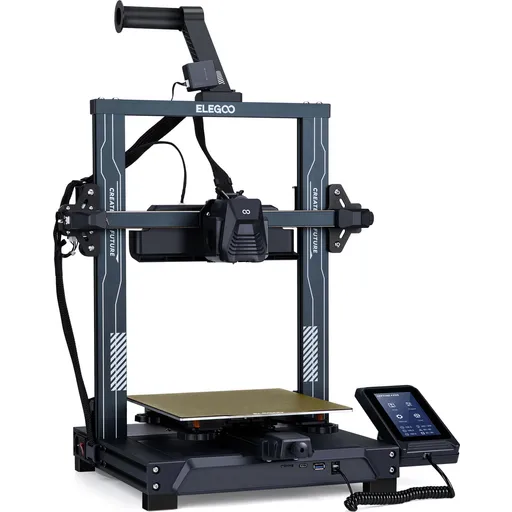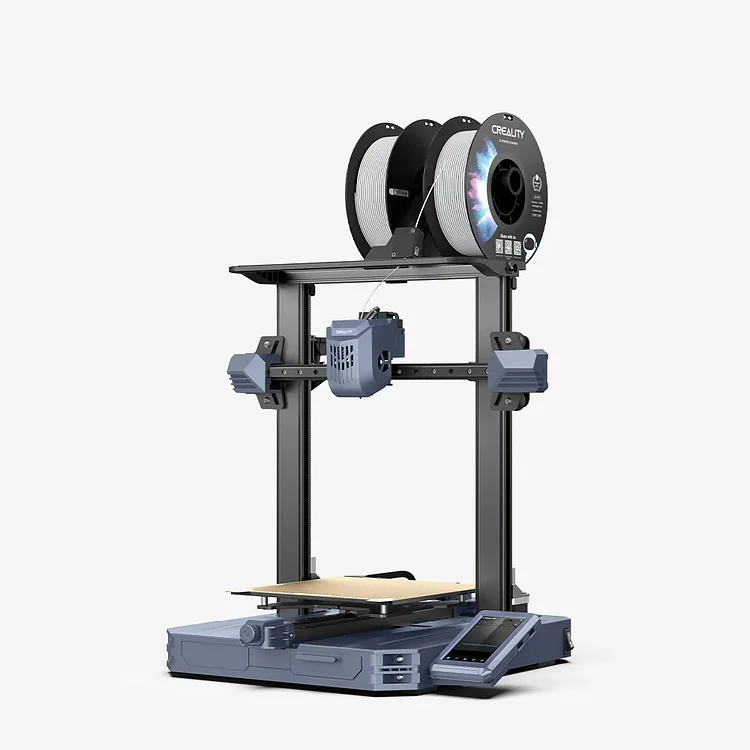Compare Neptune 4 PRO vs CR10 SE
Comparison between the best 3D printers
Choose the best 3D printer at the best price. The cheapest 3D printers are here.
Buy a 3D printer here with 3D Fila.
 |
 |
|
| Model | Neptune 4 PRO |
CR10 SE |
| Printing Material | Filament | Filament |
| Buy Filament for Elegoo Neptune 4 PRO | Buy Filament forCreality CR10 SE | |
| Estimated price | $359,00 | $386,00 |
| Manufacturer | Elegoo | Creality |
| Release Year | 2023 | 2023 |
| Print Volume [mm] | 225x225x265 | 220x220x265 |
| Printer Size [mm] | 475x445x515 | 490x470x625 |
| Weight [kg] | 8,9 | 6,9 |
| Power Loss Recovery | YES | NO |
| Enclosed printer | NO | NO |
| Bed Leveling | Automatic | |
| Filament End Sensor | YES | NO |
| Bed type | Heated | |
| Power supply system | Direct Drive | Direct Drive |
| Standard nozzle | 0,4 | 0,4 |
| Maximum Nozzle Temperature [°C] | 300 | 300 |
| Maximum Bed Temperature [°C] | 110 | 110 |
| Maximum printing speed [mm/s] | 500 | 600 |
| Filament holder | YES | YES |
| Camera for supervision | NO | NO |
| Recommended filaments | PLA, PLA+, TPU, PETG, Nylon, ABS | PLA, PETG, PET, TPU, PA Wood, ABS, ASA, PA, PLA-CF |
| Recommended slicers | Bambu Studio, Super Slicer, Cura, Prusa Slicer, Orca | Creality Print, Cura, Simplify3D, PrusaSlicer, Orca Slice |
| Maximum Resolution [mm] | 0,1 | 0,1 |
| Processor | ARM 64 bit | |
| Display | Touchscreen 4,3'' | |
| Power Supply | 310 W | |
| Connectivity | USB, microSD | USB, Wifi |
| Operating systems | Windows, Linux, Macbook | Windows, Linux, Macbook |
| Date of registration in the system | 2024-07-02 | 2024-07-02 |
| Release date | 2023 | 2023 |
| Extra features | The Elegoo Neptune 4 Pro stands out for its advanced features, including pre-installed Klipper firmware, a dual-gear direct extruder with a 5.2:1 ratio, a high-temperature nozzle (up to 300°C), a flexible magnetic PEI platform, efficient cooling fans, and a 121-point auto-leveling system. The printer also features a 4.3-inch touchscreen interface, dual linear bars on the X and Y axes, and a segmented heated bed for energy savings. | The Creality CR10 SE stands out for its printing speed of up to 600 mm/s, easy and intuitive assembly, direct extruder with double gears, hotend with hardened steel nozzle and ceramic heater, automatic leveling with CR-Touch and pressure sensor, and use of Creality OS firmware based on Klipper, with automatic input shaping calibration. It also includes Wi-Fi connectivity, a filament out-of-stock sensor and a robust structure with linear rails on the X and Y axes. |
| Support for multiple colors and materials (AMS and CFS) | NO | NO |
Notes * |
||
| Cost-benefit | 7 / 10 | 7 / 10 |
| Hardware | 2.8 / 10 | 2.1 / 10 |
| Tela | . | . |
| Print volume | 3 / 10 | 3 / 10 |
| Performance | 4 / 10 | 5 / 10 |
Conclusion |
| In comparing the Elegoo Neptune 4 Pro and the Creality CR10 SE, both printers provide commendable features that cater to different user needs and preferences. The Elegoo Neptune 4 Pro impresses with its advanced features, including a robust automatic bed leveling system and a filament end sensor, providing added convenience and reliability during printing. It also offers a high maximum nozzle temperature, which enhances its versatility in handling various filament types. Furthermore, its compact design and slightly lower weight make it easier to accommodate in limited spaces without sacrificing print volume capabilities. On the other hand, the Creality CR10 SE excels with its higher maximum printing speed and Wi-Fi connectivity, making it ideal for users who prioritize rapid production and remote print management. The printer's automatic leveling system and hardened steel nozzle contribute to its durability and efficiency. However, it lacks some of the automatic safety features found in the Neptune 4 Pro. In terms of cost-effectiveness, both printers are competitively priced, and each offers unique advantages that might appeal to different users based on their specific needs. Overall, the choice between the two depends on what a user values more: the advanced automation and reliability of the Elegoo Neptune 4 Pro or the speed and connectivity features of the Creality CR10 SE. Both models offer strong performance, contributing to their equal ratings in cost-benefit, but the overall best option ultimately rests with the individual user's priorities in 3D printing. |

